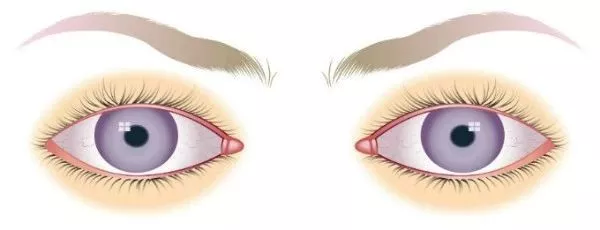At the age of 3, Jiajia was born with congenital strabismus and was constantly pointed at wherever she went. At a young age, she suffered a lot of emotional damage. In order to ensure the healthy growth of their child’s body and mind, the parents took her to many hospitals.
Doctors at other eye hospitals usually recommend surgery directly, but it’s different at Xima. After seeing the doctor here, they said that the two-year-old baby should first wear glasses to stabilize for three months, and then come back every three months for two or three follow-up visits. After the data stabilized, the professor agreed to perform the surgery under general anesthesia for the child. This is a responsible performance for the child and parents! “Jiajia’s mother said. After the surgery, the baby’s eyes recovered very well, and now she is full of confidence.
Children with strabismus not only have defects in appearance, but also have a negative impact on their physical and mental health. If treatment is delayed, it may develop into amblyopia, affecting the child’s visual health.
Therefore, early detection and treatment of children’s strabismus are crucial.
How to detect that a child may have strabismus?
There is a way for parents to self test at home, as follows:
Prepare a small flashlight and have the child lie on their back in a dimly lit area. Then, shine the flashlight directly in front of the child’s eyes, approximately 50 centimeters away.
If the light spot falls on the center of the child’s pupil at the same time, the child does not have strabismus (or epicanthus).
If one light spot falls in the center of the pupil and the other falls on the inside or outside of the pupil, the child may have strabismus.
After self testing, if there is any doubt, it is recommended to go to a regular ophthalmic hospital for professional examination.
Under normal circumstances, our eyes look like this:
The black eyeballs landed steadily in the center of the eyes, but the slanted eyes:
Two eyes cannot focus together when looking at things, or when one eye is looking at a fixed object, the other eye appears skewed.
Be wary of these four ‘accomplices’:
Some strabismus is caused by genetic factors, but there are also cases where strabismus occurs “accidentally”

For example, a child may experience strabismus due to fever, shock, trauma, or even learning a musical instrument.
Why is that? There are mainly these four ‘accomplices’
- Congenital abnormalities
In clinical medicine, strabismus that occurs within 6 months is recognized as congenital strabismus, which does not have the basic conditions to establish binocular vision and poses a significant threat to the development of visual function.

- Characteristics of Eye Development
Due to the small size and short axial length of children’s eyeballs, they are often hyperopic. Additionally, due to the high refractive power of the cornea and lens, the ciliary muscle has strong contraction and regulation ability. Such children need more adjustment to see objects clearly, and at the same time, their eyes are forced inward to produce excessive convergence, which can easily cause esotropia, known as regulatory esotropia.
- Insufficient control ability of the eye movement center
If the set is too strong or the outreach is insufficient, or both exist simultaneously, an inward tilt occurs; On the contrary, if the outward extension is too strong, the collection is insufficient, or both exist simultaneously, outward inclination occurs.
- Strabismus induced by trauma or illness
Children with underdeveloped nervous systems may experience strabismus if they suffer from trauma, shock, or seizures after fever during this period. If treated promptly, this neurotic strabismus can slowly recover within three months. Children over the age of five have well-developed stereoscopic vision, which is less common.
What should I do if my child is diagnosed with strabismus?
If strabismus was not treated during childhood and missed the optimal correction time, the treatment effect may not be as good as before as it grows up.
So, timely treatment is the key to discovering a child’s strabismus!
The first diagnosis for children with strabismus requires an ophthalmic examination after dilated pupils, especially to rule out congenital eye diseases such as retinoblastoma. Paralytic strabismus requires targeted treatment for the underlying cause, while concomitant strabismus requires treatment with the 4 “O” regimen.
The 4 “O” treatment plans refer to Optical Correction, Orthopedic Exercises, Occlusion, and Operation.
Flexibly apply these four “O” according to the different situations of patients. Some patients can improve their condition by using one “O”, while others require four tubes to cure strabismus. Among these four “O”, surgery is often the last resort.
Glasses correction
Refractive errors include myopia, hyperopia, and astigmatism. Hyperopia can easily lead to esotropia, while myopia can sometimes lead to exotropia, which can be treated by wearing glasses. However, it should be noted that children with refractive errors need to undergo mydriatic refraction, and children with esotropia need to undergo their first refraction after atropine dilation.
Visual axis correction movement
There are many types of visual axis correction exercises. Patients with exotropia can perform eye muscle convergence exercises, while patients with esotropia can perform eye muscle relaxation exercises. Visual axis correction exercises can also exercise “monocular vision” in both eyes, helping strabismus patients strengthen or rebuild their ability to see three dimensions.
Utilize images from binocular fusion training to enhance the shared functionality of both eyes
Covering therapy
Due to the fact that many patients with strabismus also suffer from amblyopia, it is necessary to use masking therapy to “eliminate the strong and support the weak”, cover normal eyes, and force patients to use more eyes with amblyopia in order to exercise and restore their function.
Using the method of ‘weeding out the strong and supporting the weak’ for treatment
Strabismus surgery should seize the most suitable time for treatment
Not all strabismus eyes require surgical treatment.
The latest research suggests that surgery for congenital esotropia in infants and young children should be performed within one year of birth. Be sure to have a dilated eye examination first. If you have farsightedness, wear sufficient corrective glasses first. If the internal inclination is completely corrected, surgery is not necessary and continuing to wear glasses can cure the condition. If wearing glasses for more than 6 months only reduces esotropia, surgery should be performed as soon as possible. If there is no change in esotropia after wearing glasses, surgery should be performed even earlier.
Children with concomitant strabismus need a doctor to diagnose their refractive condition and changes in oblique angle. Generally, surgical correction is considered after 3-6 months of stability, and the effect is relatively ideal. In addition, it is necessary to evaluate the overall condition before general anesthesia. The specific surgical time varies from person to person and needs to be completed under the guidance of a doctor.
